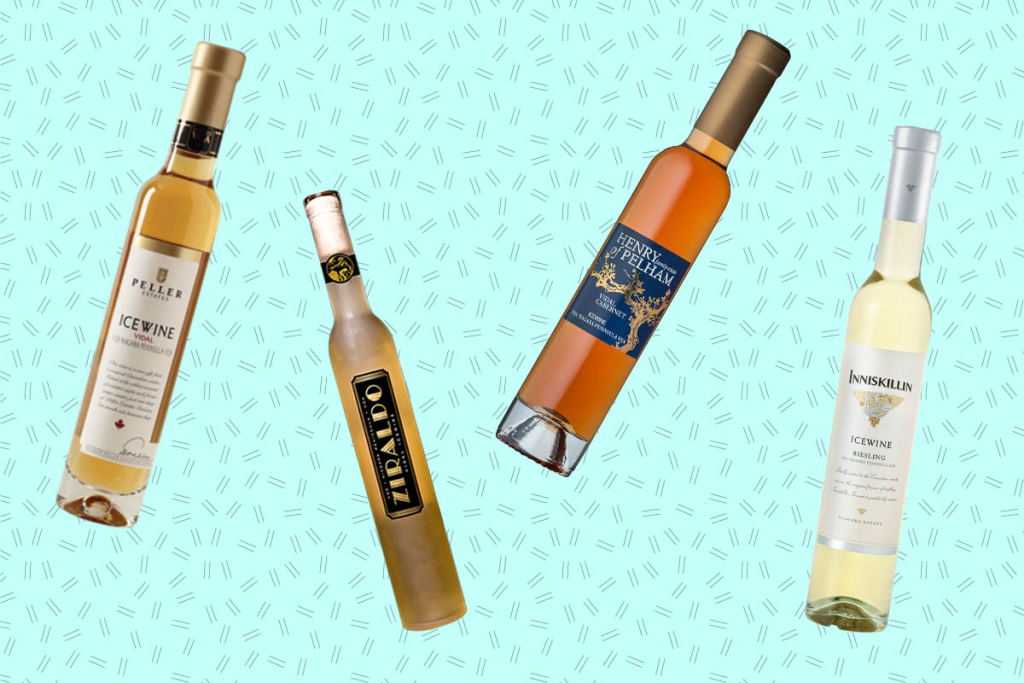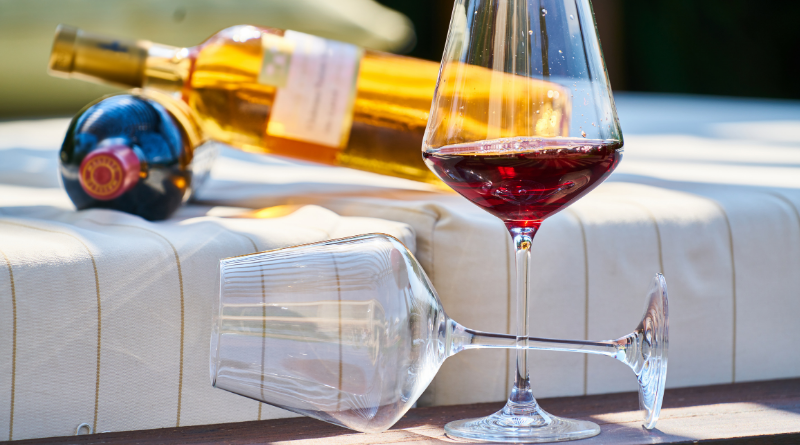Ice Wine: Exploring the Delicate Elixir of Frozen Grapes
Welcome to the ultimate guide to ice wine, where we delve into the captivating world of this exquisite elixir crafted from frozen grapes. Ice wine, also known as Eiswein, is a unique and highly sought-after wine renowned for its luscious sweetness and complex flavors. In this article, we will unravel the fascinating story behind ice wine, explore its production process, delve into notable ice-wine regions, and uncover the secrets of serving and pairing this delightful nectar.
Over the years, ice wine has garnered increasing popularity and acclaim among wine enthusiasts worldwide. It is considered a true rarity in the wine world, as its production is dependent on specific climatic conditions and a meticulous harvesting process. The result is a liquid jewel that encapsulates the essence of the frozen grapes, delivering a harmonious blend of natural sugars, vibrant acidity, and concentrated flavors.

To truly appreciate ice wine, one must understand its origins. The history of ice wine dates back centuries, with its roots firmly planted in the winemaking regions of Germany and Austria. The tradition gradually spread to other cold-climate regions, including Canada and the United States, where winemakers embraced the challenges of producing this liquid gold.
Whether you are an avid wine connoisseur, a curious epicurean, or simply someone looking to expand their knowledge, this comprehensive guide will equip you with a wealth of information about ice-wine. Discover the perfect serving temperature, learn about ideal food pairings, and gain insights into storing and aging these liquid treasures.
Join us as we unravel the captivating story of ice wine, celebrating the craftsmanship, dedication, and extraordinary flavors that make it a true gem in the world of wines.
What is Ice Wine?
Ice wine, also known as Eiswein, is a unique and highly revered category of wine renowned for its exceptional sweetness, vibrant acidity, and intense flavors. It is a true delicacy crafted from grapes that have been left to freeze on the vine. The resulting concentrated juice is then transformed into a sumptuous elixir through a meticulous winemaking process.

The defining characteristic of ice wine lies in its production method. Unlike traditional wines, where grapes are harvested at their peak ripeness, ice wine grapes are left on the vine until the winter chill sets in. This timing is crucial, as ice-wine grapes must experience temperatures of -8°C to -10°C (17°F to 14°F) or lower. It is this freezing process that lends ice-wine its exceptional qualities.
When the grapes freeze, the water within them crystallizes, leaving behind a highly concentrated juice. During the pressing stage, the frozen grapes are gently pressed, extracting only a small quantity of intensely flavorful juice. What remains behind are the ice crystals and other impurities, resulting in a pure, nectar-like liquid with heightened sugars and acidity.
The concentrated juice is then fermented slowly at cool temperatures to preserve the unique flavors and aromas. This slow fermentation process, combined with the natural sugars and acidity of the grapes, contributes to ice-wine’s characteristic balance and complexity.
Ice Wine Tasting Note
The flavor profile of ice wine is a symphony of indulgent sweetness, vibrant acidity, and nuanced fruitiness. Notes of ripe tropical fruits, honey, apricot, peach, pear, and citrus often dominate the palate, accompanied by a refreshing acidity that provides balance and structure. The concentrated flavors and the velvety texture of ice wine create a luxurious and lingering experience on the palate.
Ice Wine : The Production Process
The production process of ice wine is a delicate and precise undertaking that requires careful attention to detail and favorable climatic conditions. From grape selection to harvesting and pressing, every step contributes to the creation of this extraordinary elixir. Let’s delve into the intricacies of the ice-wine production process.
Grape Selection
The first crucial step in ice wine production is the careful selection of grapes. Not all grape varieties are suitable for ice wine production. Ideally, grapes with thick skins and high natural acidity are preferred, as they can withstand the freezing temperatures and maintain their flavor integrity. Common grape varieties used for ice wine include Riesling, Vidal Blanc, Cabernet Franc, Gewürztraminer, and Chenin Blanc.
Climatic Conditions
Ice wine production is dependent on specific climatic conditions. The grapes must experience freezing temperatures of -8°C to -10°C (17°F to 14°F) or lower. These extreme cold temperatures are necessary to freeze the grapes on the vine and concentrate the sugars and flavors within them. Regions with a cold climate and a consistent pattern of freezing temperatures, such as Canada and certain parts of Europe, are ideal for ice wine production.
Harvesting
The timing of the harvest is crucial for ice-wine production. The grapes must be left on the vine until they reach the desired level of frozen ripeness. This often means allowing the grapes to hang on the vine well into the winter months, even as snow blankets the vineyards. Harvesting typically takes place in the early morning hours when temperatures are at their coldest to ensure the grapes remain frozen during the picking process.
Pressing
Once the frozen grapes are harvested, they are taken to the winery for pressing. The grapes are gently pressed while still frozen, extracting only a small amount of highly concentrated juice. The pressing process must be slow and delicate to prevent the extraction of any ice crystals or impurities. What remains is the rich, sweet juice that will be fermented into ice wine.
Fermentation
The extracted juice, known as “must,” is then fermented at cool temperatures to preserve the delicate flavors and aromas. The slow fermentation process, often taking several months, helps retain the natural sugars and acidity of the grapes. This extended fermentation allows the wine to develop its characteristic balance, complexity, and aromatic profile.
Aging
After fermentation, ice wines are typically aged for a period of time to further develop their flavors and textures. The aging process can occur in stainless steel tanks or oak barrels, depending on the winemaker’s preference. This stage allows the wine to integrate and harmonize its components, resulting in a more refined and complex final product.
Bottling
Once the aging process is complete, the ice wine is ready for bottling. It is important to note that ice wine is often bottled in smaller formats, such as 375 ml or even 200 ml, due to its intense sweetness and richness. The smaller bottles also help preserve the wine’s freshness once opened, as ice wine is typically consumed in smaller quantities.
Top Ice Wine Regions

Ice wine production is a specialized winemaking practice that requires specific climatic conditions. While ice wines can be found in various parts of the world, certain regions have gained recognition for their exceptional ice wine production. Let’s explore some of the notable ice wine regions and the unique characteristics they bring to this extraordinary wine style.
Canada
Canada is renowned for its production of world-class ice wines, particularly in the provinces of Ontario and British Columbia. The Niagara Peninsula, in Ontario, is often hailed as one of the premier ice-wine regions globally. The region’s cold winters and proximity to the Great Lakes create a suitable microclimate for the production of high-quality ice wines. Additionally, the unique terroir of the Niagara Peninsula imparts a distinctive flavor profile to the ice wines, characterized by rich stone fruit flavors, balanced acidity, and a luscious mouthfeel.
Germany
Germany is celebrated as a pioneer in ice-wine production, with a history dating back several centuries. The regions of Rheingau and Mosel are particularly renowned for their ice wines. The cool climate and steep vineyards along the Mosel River allow for extended hang times, which contribute to the development of complex flavors and vibrant acidity. German ice-wines, often crafted from Riesling grapes, exhibit elegant fruit notes, lively acidity, and a pronounced minerality that adds to their distinctiveness.
Austria
In Austria, the Burgenland region has gained recognition for its exceptional ice wines. Located on the eastern side of the country, bordering Hungary, Burgenland experiences cold winters that are ideal for ice wine production. The region’s microclimates, influenced by Lake Neusiedl, create favorable conditions for the growth of noble rot (Botrytis cinerea), which further enhances the concentration and complexity of the grapes. Austrian ice wines, primarily made from Grüner Veltliner and Welschriesling grapes, exhibit a harmonious balance of sweetness, acidity, and vibrant fruit flavors.
United States
Several regions in the United States have emerged as prominent producers of ice wine, particularly in the states of New York and Washington. The Finger Lakes region in upstate New York, with its cool climate and proximity to the Finger Lakes themselves, offers an ideal environment for ice wine production. The region’s Riesling ice wines are highly regarded for their vibrant acidity, intense flavors of apricot and citrus, and a remarkable ability to age gracefully. Washington state, particularly the Yakima Valley and Columbia Valley regions, also produces exceptional ice wines, primarily from Riesling and Cabernet Franc grapes.
Switzerland
Switzerland, nestled amidst the Alps, is known for its picturesque vineyards and production of high-quality ice wines. The Valais region, in particular, stands out as a premier ice wine producer. The steep slopes, sunny days, and cool nights in Valais create optimal conditions for the cultivation of late-harvested and frozen grapes. Swiss ice wines showcase a range of grape varieties, including Chasselas, Sylvaner, and Gewürztraminer, and are characterized by their elegance, complexity, and long aging potential.
These regions represent just a fraction of the world’s ice wine production, as other countries, such as Austria, France, Luxembourg, Hungary, and Canada’s British Columbia, also craft exceptional ice wines. Each region brings its unique climate, grape varieties, and winemaking traditions to the production of ice wines, resulting in a diverse range of styles and flavor profiles. Exploring ice-wines from different regions offers a captivating journey into the world of this extraordinary wine style and the terroir-driven nuances it embodies.
Serving and Pairing Ice Wine:
Ice wine is a luxurious and indulgent dessert wine that demands special attention when it comes to serving and pairing. Here are some guidelines to ensure you make the most of your ice wine experience:
Serving Ice Wine:
Temperature
Serve ice wine chilled but not overly cold. A recommended serving temperature is between 8°C and 12°C (46°F and 54°F). This allows the wine to showcase its complex flavors and aromas while maintaining a refreshing quality.
Glassware
Use small, tulip-shaped glasses or dessert wine glasses to concentrate the aromas and capture the nuances of the wine. The smaller size helps maintain the proper serving temperature and allows for controlled sipping.
Portion Size
Ice wine is often served in smaller quantities due to its richness and sweetness. A serving size of 2-3 ounces per person is typically sufficient to appreciate its intense flavors.
Decanting
In some cases, particularly with older ice wines that may have developed sediment, decanting can help separate any solids and enhance the wine’s aromas. However, for younger ice wines, it’s often best to pour directly from the bottle to maintain their vibrant freshness.
Pairing Ice Wine:
Cheese
Ice wine pairs beautifully with a variety of cheeses. Opt for creamy and tangy options such as blue cheese, Roquefort, Gorgonzola, or aged cheddar. The contrast between the sweetness of the wine and the savory, slightly salty flavors of the cheese creates a harmonious combination.
Fruit-Based Desserts
Ice wine is a natural companion to fruit-based desserts. Try serving it with dishes featuring peaches, apricots, pears, or tropical fruits. Fruit tarts, crumbles, and sorbets make delightful pairings that complement the wine’s natural fruit flavors.
Foie Gras and Pâté
The rich, buttery flavors of foie gras and the savory complexity of pâtés provide a luxurious match for ice wine. The wine’s sweetness balances the richness of the dish and creates a delightful interplay of flavors.
Dark Chocolate
The intense flavors of dark chocolate work wonderfully with ice wine. Look for chocolates with high cocoa percentages to complement the wine’s sweetness. Experiment with flavors like caramel, nuts, or even chili-infused chocolate for a delightful contrast.
Spicy Asian Cuisine
Ice wine can provide a counterpoint to the heat and spiciness of certain Asian dishes. Consider pairing it with spicy Thai or Indian curries, where the wine’s sweetness helps cool the palate and creates a pleasant balance.
Enjoy on its Own
Ice wine is a luxurious treat that can be enjoyed on its own as a dessert. Savor its rich, concentrated flavors and allow yourself to fully experience its complexity without any culinary distractions.
Conclusion
In conclusion, ice wine stands as a remarkable and distinct style of dessert wine that captivates wine enthusiasts with its exceptional sweetness, complexity, and concentrated flavors. Made from grapes that have frozen naturally on the vine, ice wine showcases a unique production process that results in a luscious and vibrant wine.
In the world of dessert wines, ice wine stands as a true gem, showcasing the extraordinary beauty that can be achieved when nature, craftsmanship, and the art of winemaking intertwine. Its rarity, exquisite flavors, and undeniable allure make ice wine a prized possession for wine connoisseurs and a testament to the endless possibilities that wine can offer.





Pingback: 10 Frozen Gems: Discovering the Finest Ice Wines in the World